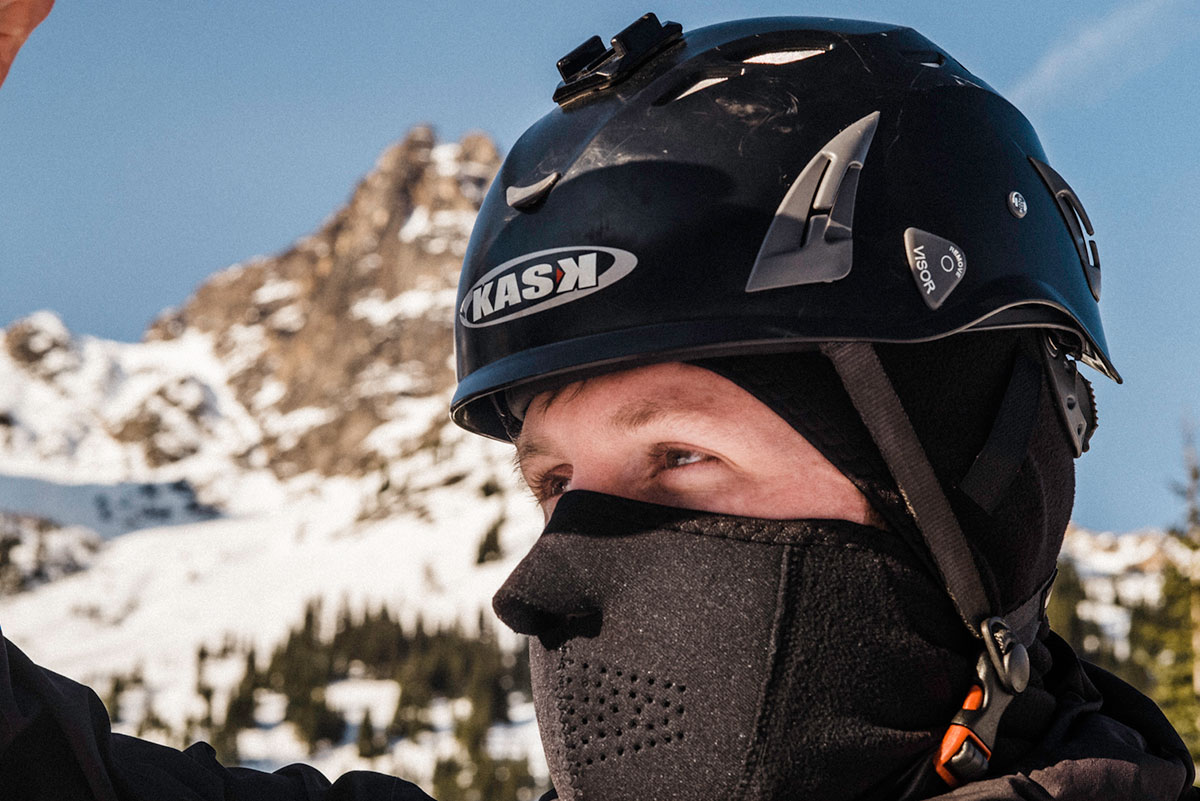Your cart is currently empty!
Stay Warm & Safe at Height

We talk so much about fall protection, but how about winter protection? Here in Northwest Washington its that time of year again, freezing temperatures, ice, and even a little bit of snow. Cold weather conditions can affect your body and equipment severely if special precautions are not taken. It is important to keep this in mind when preplanning for any job outdoors this time of year. Whether it’s climbing communication towers to work on antennas, rope access work, or climbing up on a roof for maintenance on an HVAC system. Here are some tips to help protect your self from the severe and frigid conditions we must endure while working up at height.
HARNESS OVER OR UNDER JACKET?
Gravitec recommends putting your harness over-top your cold-weather gear for a number of reasons.
Harness Stretch: During a fall a harness may stretch considerably. If your jacket is on over your harness that stretches to the top of your head, there is a huge risk of devastating damage taking a zipper to the neck. If the zipper unzips at high speeds across the neck, I can’t help but see anything good coming from that. If the zipper jams and does not unzip during the fall, there is a serious risk of suffocation from the collar of the jacket.
Adjustment: You may have to adjust your buckles to compensate for the added bulk. If you have loosened up your harness to the point there is no more tail left on your shoulder straps or leg loops, bump up in harness size. During a fall it is important to have some extra webbing tail left over after adjustment. During a fall this extra webbing can slip through the adjustment buckles slightly to help protect the harness and body during a fall.
D-ring access: It will be a whole lot easier to access all the d-rings needed on your harness if it is over the jacket. Even if you can access the d-rings under the jacket, there is a greater chance a piece of clothing will get snagged during a connection, resulting in a snap hook gate left open partially.
FALL PROTECTION EQUIPMENT
ANSI Standard: Use fall protection equipment that meets the ANSI standard. Cold weather can affect the performance of materials resulting in failure of fall protection equipment or higher arrest forces. Energy absorbers and webbing can freeze and become brittle and crack. Fall arrest equipment that meets the latest ANSI standard are tested specifically in cold temperature environments. For example, energy-absorbing lanyards that meet the Z359.13 standard are tested in cold conditions at -31° C +/- 4°F for a minimum of 8 hours.
Storage: Keep your equipment in a dry environment. A common warning label to see on energy absorbers is “forces may increase if cold, or wet” and this is true. This is due to the fact that when frozen an energy absorber’s ability is limited and higher forces occur.
CLOTHING
Core: It is vital to protect your core temperature. On the job, you don’t want to have to worry about nonsense like hypothermia and survival. The key is to have layers. The first layer should be breathable, and close to the skin. A second layer to retain heat. Lastly, a third layer to repel moister. Consider harness fit after having all these layers on. Any clothing made out of cotton can absorb cold water and suck the heat out of your body. Many jeans are made out of cotton. Clothing made of polyester is hydrophobic, which means it will not absorb the water and it is quick drying material. So layer up!
Gloves and socks: Dexterity and coordination can be lost with cold hands making connectors harder to open, and tools harder to use. Even worse, dropping a tool, or letting go of structure accidentally. You’re going to want some insulated work gloves with waterproof palms. Cold and wet hands and feet can make or break your day. Most jobs involve hands so you need them to be as functional as possible. You can’t go wrong with nice comfy thick polyester socks, this helps maintains extremity warmth, dryness, and overall contentment to your day.
Balaclava: This is a great accessory to keep the noggin and neck warm. Serving the same function as a scarf, although a balaclava may not be as fashion-forward, keeping the neck warm is a big contributor to a warm core. Plus nobody likes cold ears and nose.
STAY HYDRATED
This is something that can be easy to forget during winter months. Although staying hydrated is important in hot environments, it can also be said for the cold. Labor-intensive work such as climbing can cause the body to sweat, although this sweat can evaporate quickly, the body does lose fluid. As well as just breathing cold air can cause the body to lose fluid. Drink a warm non-caffeinated tea in a thermos, or good old fashion water will do the trick. Although it may be tempting, don’t eat the snow. Your body can spend more energy warming up the snow to body temperature, making you more dehydrated and cold.
DID YOU KNOW?
Clothing insulation may be expressed in clo units. In order the maintain a persons comfort in an environment at 21°C (70°F) they need 1 clo. A business suit has a value of roughly 1 clo. The idea is to wear garments that have a high clo value in order to maintain comfortable body temperature in a colder environment. The combination of Insulated coveralls, long-sleeved thermal underwear, and long underwear bottoms provide 1.37 clo according to ASHRAE the standard for Thermal Environmental Conditions for Human Occupancy. Those thick knee-high socks I was talking about earlier? A whopping 0.06 clo!
If you have any questions, contact Gravitec Systems at 1.800.755.8455.